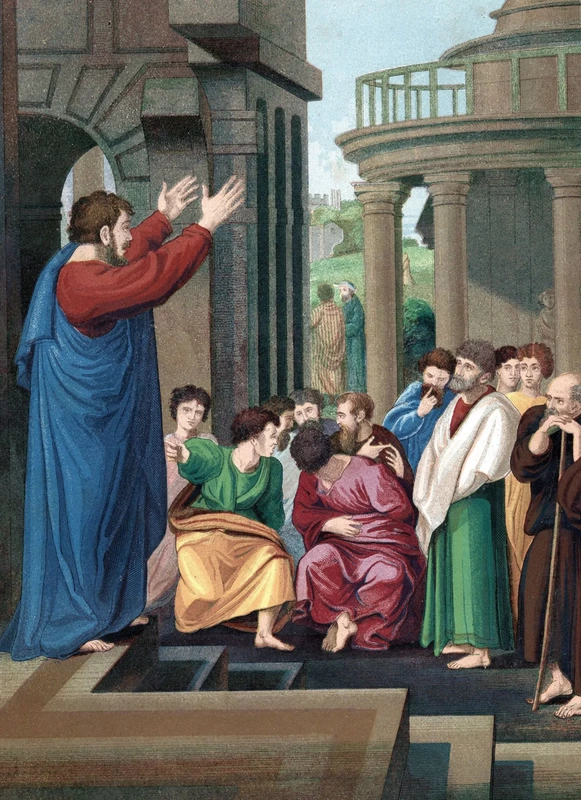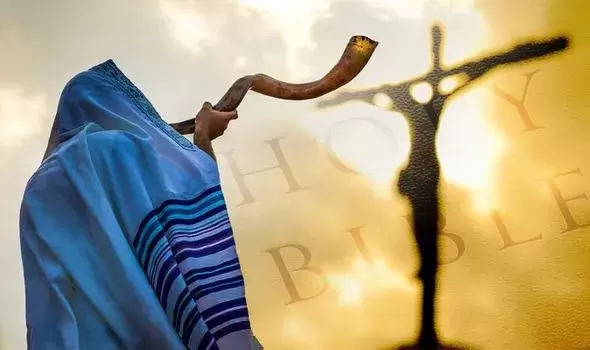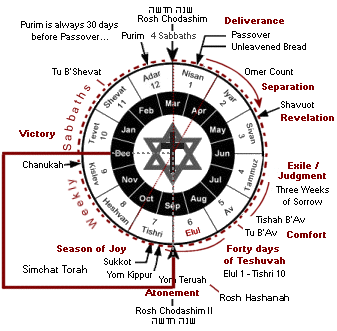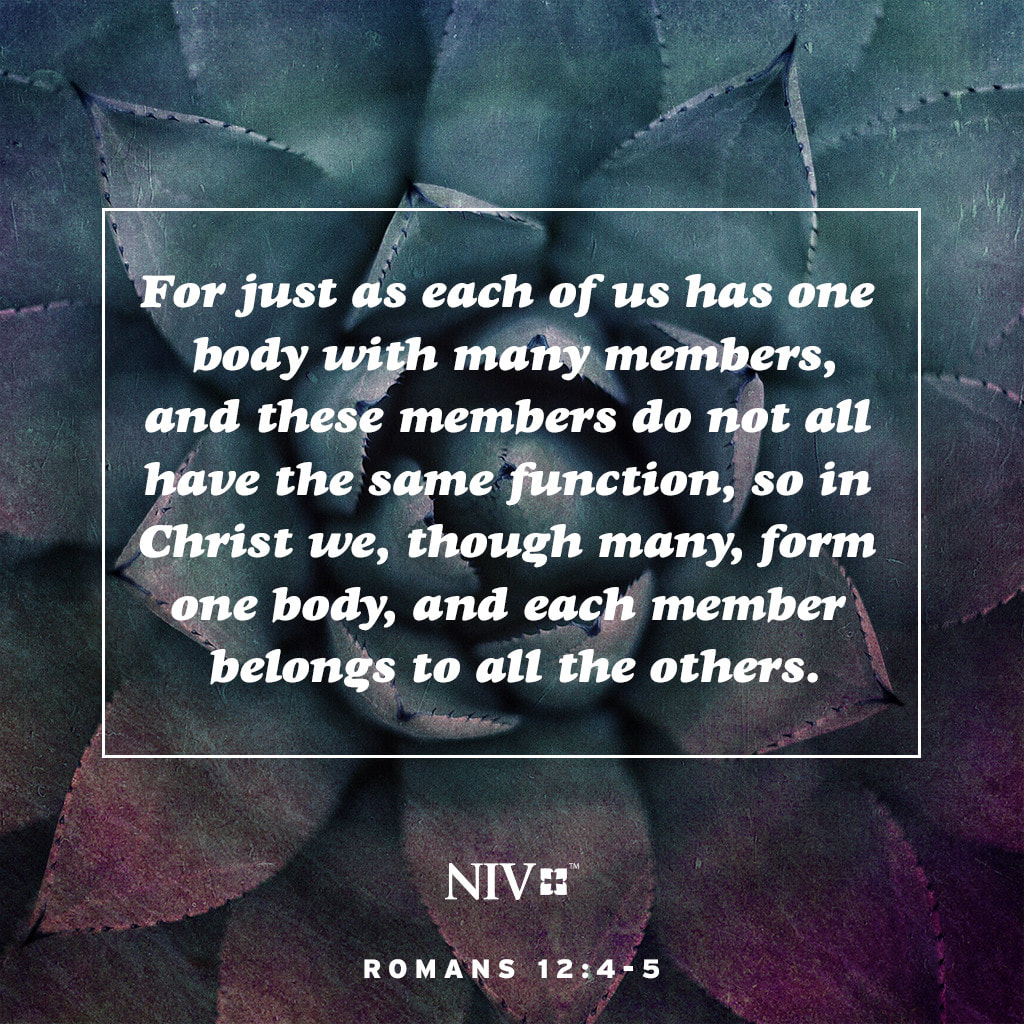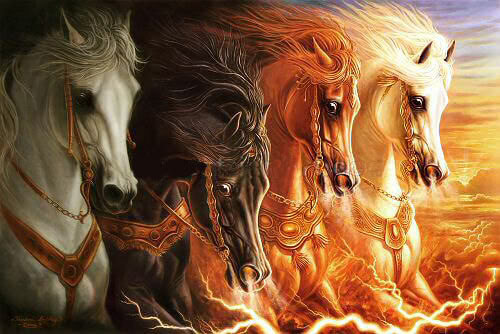|
Typically, when someone is thinking of the “lion and the lamb,” Isaiah 11:6 is in mind due to it often being misquoted, “And the wolf will dwell with the lamb, and the leopard will lie down with the young goat, and the calf and the young lion and the fatling together.” The true “Lion and the Lamb” passage is Revelation 5:5–6. The Lion and the Lamb both refer to Jesus Christ. He is both the conquering Lion of the tribe of Judah and the Lamb who was slain. The Lion and the Lamb are descriptions of two aspects of the nature of Christ. As the Lion of Judah, He fulfills the prophecy of Genesis 49:9 and is the Messiah who would come from the tribe of Judah. As the Lamb of God, He is the perfect and ultimate sacrifice for sin. The scene of Revelation 4—5 is the heavenly throne room. After receiving the command to write to the seven churches in Asia Minor, John is “caught up in the spirit” to the throne room in heaven where he is to receive a series of visions that culminate in the ultimate victory of Christ at the end of the age. Revelation 4 shows us the endless praise that God receives from the angels and the 24 elders. Chapter 5 begins with John noticing that there is a scroll in the “right hand of him who was seated on the throne.” The scroll has writing on the inside and is sealed with seven seals. After giving us a description of the scroll, an angel proclaims with a loud voice, 'Who is worthy to open the scroll and break its seals?” John begins to despair when no one comes forth to answer the angel’s challenge. One of the 24 elders encourages John to “weep no more,” and points out that the Lion of the tribe of Judah has come to take and open the scroll. The Lion of the tribe of Judah is obviously a reference to Christ. The image of the lion is meant to convey kingship. Jesus is worthy to receive and open the scroll because he is the King of God’s people. Back in Genesis 49:9, when Jacob was blessing his sons, Judah is referred to as a “lion’s cub,” and in verse 10 we learn that the “scepter shall not depart from Judah.” The scepter is a symbol of lordship and power. This was a prophecy that in Israel the kingly line would be descended from Judah. That prophecy was fulfilled when David succeeded to the throne after the death of King Saul (2 Samuel). David was descended from the line of Judah, and his descendants were the kings in Israel/Judah until the time of the Babylonian captivity in 586 BC. This imagery of kingship is further enhanced when Jesus is described as the “root of David.” This harkens us back to the words of Isaiah the prophet: "There shall come forth a shoot from the stump of Jesse, and a branch from his roots shall bear fruit. . . . In that day the root of Jesse, who shall stand as a signal for the peoples—of him shall the nations inquire, and his resting place shall be glorious” (Isaiah 11:1, 10). As the root of David, Jesus is not only being identified as a descendant of David, but also the source or “root” of David’s kingly power. Why is Jesus worthy to open the scroll? He is worthy because He “has conquered.” We know that, when Jesus returns, He will conquer all of God’s enemies, as graphically described in Revelation 19. However, more importantly, Jesus is worthy because He has conquered sin and death at the cross. The cross was the ultimate victory of God over the forces of sin and evil. The events that occur at the return of Christ are the “mop-up” job to finish what was started at the cross. Because Jesus secured the ultimate victory at Calvary, He is worthy to receive and open the scroll, which contains the righteous judgment of God. Christ’s victory at the cross is symbolized by his appearance as a “Lamb standing, as though it had been slain” (Revelation 5:6). Prior to the exodus from Egypt, the Israelites were commanded by God to take an unblemished lamb, slay it, and smear its blood on the doorposts of their homes (Exodus 12:1–7). The blood of the slain lamb would set apart the people of Israel from the people of Egypt when the death angel came during the night to slay the firstborn of the land. Those who had the blood of the lamb would be spared. Fast forward to the days of John the Baptist. When he sees Jesus approaching him, he declares to all present, “Behold, the Lamb of God, who takes away the sin of the world!” (John 1:29). Jesus is the ultimate “Passover lamb” who saves His people from eternal death. So when Jesus is referred to as the Lion and the Lamb, we are to see Him as not only the conquering King who will slay the enemies of God at His return, but also as the sacrificial Lamb who took away the reproach of sin from His people so they may share in His ultimate victory. When Jesus is called the Lamb of God in John 1:29 and John 1:36, it is referring to Him as the perfect and ultimate sacrifice for sin. In order to understand who Christ was and what He did, we must begin with the Old Testament, which contains prophecies concerning the coming of Christ as a “guilt offering” (Isaiah 53:10). In fact, the whole sacrificial system established by God in the Old Testament set the stage for the coming of Jesus Christ, who is the perfect sacrifice God would provide as atonement for the sins of His people (Romans 8:3; Hebrews 10). The sacrifice of lambs played a very important role in the Jewish religious life and sacrificial system. When John the Baptist referred to Jesus as the “Lamb of God who takes away the sin of the world” (John 1:29), the Jews who heard him might have immediately thought of any one of several important sacrifices. With the time of the Passover feast being very near, the first thought might be the sacrifice of the Passover lamb. The Passover feast was one of the main Jewish holidays and a celebration in remembrance of God’s deliverance of the Israelites from bondage in Egypt. In fact, the slaying of the Passover lamb and the applying of the blood to doorposts of the houses (Exodus 12:11-13) is a beautiful picture of Christ’s atoning work on the cross. Those for whom He died are covered by His blood, protecting us from the angel of (spiritual) death. Another important sacrifice involving lambs was the daily sacrifice at the temple in Jerusalem. Every morning and evening, a lamb was sacrificed in the temple for the sins of the people (Exodus 29:38-42). These daily sacrifices, like all others, were simply to point people towards the perfect sacrifice of Christ on the cross. In fact, the time of Jesus’ death on the cross corresponds to the time the evening sacrifice was being made in the temple. The Jews at that time would have also been familiar with the Old Testament prophets Jeremiah and Isaiah, who foretold the coming of One who would be brought “like a lamb led to the slaughter” (Jeremiah 11:19; Isaiah 53:7) and whose sufferings and sacrifice would provide redemption for Israel. Of course, that person was none other than Jesus Christ, “the Lamb of God.” While the idea of a sacrificial system might seem strange to us today, the concept of payment or restitution is still one we can easily understand. We know that the wages of sin is death (Romans 6:23) and that our sin separates us from God. We also know the Bible teaches we are all sinners and none of us is righteous before God (Romans 3:23). Because of our sin, we are separated from God, and we stand guilty before Him. Therefore, the only hope we can have is if He provides a way for us to be reconciled to Himself, and that is what He did in sending His Son Jesus Christ to die on the cross. Christ died to make atonement for sin and to pay the penalty of the sins of all who believe in Him. It is through His death on the cross as God’s perfect sacrifice for sin and His resurrection three days later that we can now have eternal life if we believe in Him. The fact that God Himself has provided the offering that atones for our sin is part of the glorious good news of the gospel that is so clearly declared in 1 Peter 1:18-21: “For you know that it was not with perishable things such as silver or gold that you were redeemed from the empty way of life handed down to you from your forefathers, but with the precious blood of Christ, a lamb without blemish or defect. He was chosen before the creation of the world, but was revealed in these last times for your sake. Through him you believe in God, who raised him from the dead and glorified him, and so your faith and hope are in God.” The Lion of the tribe of Judah is a symbol found in Genesis and Revelation. In Genesis, Jacob blesses his son Judah, referring to him and his future tribe as a lion’s cub and a lion (Genesis 49:9). In Revelation, this symbol is seen again when the Lion of the tribe of Judah is declared to have triumphed and is worthy to open the scroll and its seven seals (Revelation 5:5). Jesus is the One who is worthy to open the scroll (see John 5:22). Therefore, Jesus is the Lion of the tribe of Judah.
In Genesis, as Jacob blesses his children, he promises Judah that his brothers will praise him and that they will bow down to him. Jacob also tells Judah, “You are a lion’s cub, Judah; you return from the prey, my son. Like a lion he crouches and lies down, like a lioness—who dares to rouse him?” (Genesis 49:9). Jacob says that in the future the scepter and ruler’s staff will not depart from Judah “until he to whom it belongs shall come and the obedience of the nations shall be His” (Genesis 49:10). This messianic prophecy points forward to the second coming of the Lord Jesus, the descendant of Judah who will rule the earth (Revelation 19:11–16). Based on Jacob’s blessing, the lion is a symbol of the tribe of Judah, which is known as the kingly tribe (King David was of the tribe of Judah). Lions symbolize power, fierceness, and majesty. Lions are the king of the beasts, and the Lion of the tribe of Judah is the king of everything. In the Old Testament, God is sometimes described as being like a lion. In Isaiah 31:4, just “as a lion growls, a great lion over its prey—and though a whole band of shepherds is called together against it, it is not frightened by their shouts . . . so the LORD Almighty will come down to do battle on Mount Zion and on its heights.” The Lord is not afraid of His enemies. He protects His people and does not allow them to be conquered. In Hosea, God is angry at Israel because they became proud and forgot Him. God says, “I will be like a lion to them. . . . like a lion I will devour them. . . . You are destroyed, Israel, because you are against me, against your helper” (Hosea 13:7–8). It is better to experience the help and protection of the Lion than to deny His kingship and face His fierceness. In Revelation 5, Jesus is the long-awaited Lion of the tribe of Judah. John weeps because no one was found worthy to open the scroll of God’s judgment or even to look inside it. Then one of the elders says to John, “Do not weep! See, the Lion of the tribe of Judah, the Root of David, has triumphed. He is able to open the scroll and its seven seals” (Revelation 5:4–5). Both of the genealogies in Matthew and Luke record that Jesus is a descendant of the tribe of Judah. When Jesus is revealed as the promised Lion of the tribe of Judah, it reveals His deity. He is the true king and the One to whom belongs the long-awaited obedience of nations. Yet it is not His fierceness or the force of His power that makes Him worthy. The Lion has triumphed because He became a Lamb (Revelation 5:6–10; cf. John 1:29). Jesus Christ is worthy because He lived a perfect, sinless life and in shedding His blood defeated sin and death. His death and resurrection have resulted in a protection for His people and an eternal kingdom that will honor and worship God. Ruling this kingdom will be Jesus, the Lion of the tribe of Judah. 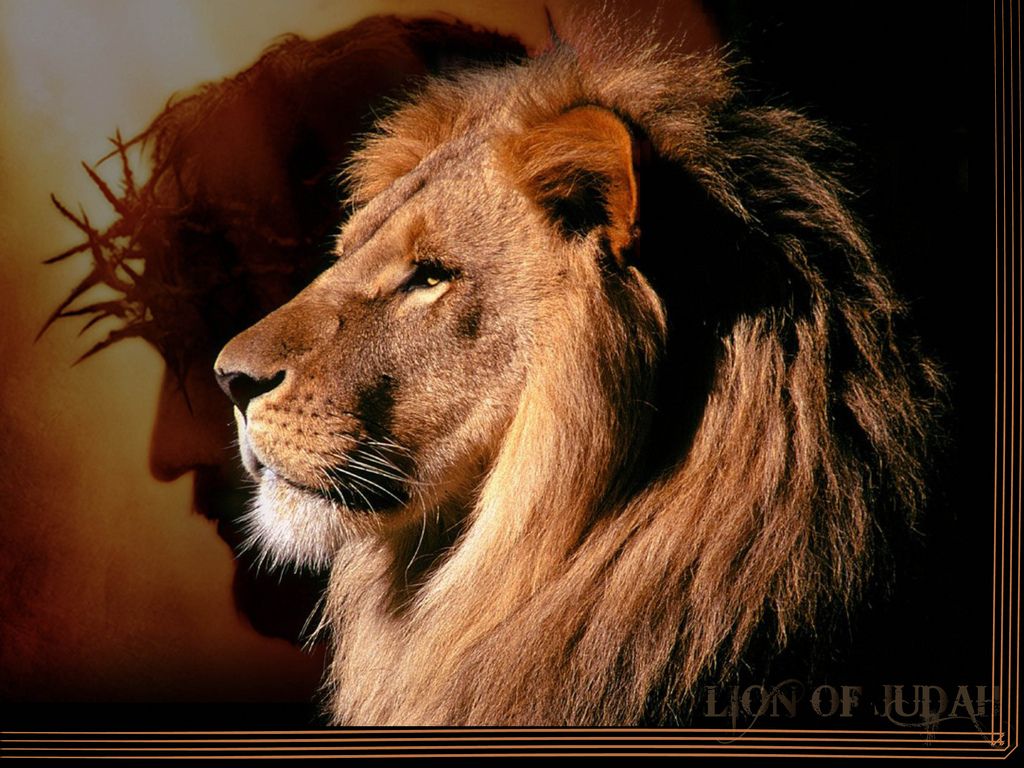 Jesus Christ not only comes to earth as perfect man (the second Adam), but He also comes as our High Priest, our Prophet-Redeemer, our Final Sacrifice, our Lawgiver and our King. These prophetic, redemptive, priestly, and kingly streams all flow into the mighty rushing river of messianic expectations that reach their fulfillment in the Lord Jesus Christ. Devout Jews would have all been familiar with these themes. Everyone knew that when the Messiah came, He would fulfill these expectations. However, we know from reading the New Testament that when the incarnation actually happened, it caught everyone by surprise. If Jesus had come forth like a mighty warrior and overthrown the power of Rome, many would have said that this was exactly the way they expected His kingly role to be fulfilled. What we discover, however, is that Jesus fulfilled these roles in ways that were unexpected. No one could have imagined that Jesus would come to suffer and die on the cross. It was completely scandalizing to think that this suffering Jesus was actually God in the flesh. There was no preparation to consider the possibility that God Himself would come to earth as the Great High Priest and then offer Himself as the sacrifice before rising again as the victorious King. Or was there? Throughout the pages of Israel’s history, there was indeed a more subtle strand, a nuanced preparation for this unexpected revelation of Messiah that would only be understood in retrospect, as the early Christians looked back upon their own prophets’ message. This is the surprise fifth figure of Christ as Suffering Servant. BIBLICAL REFERENCES TO THE SUFFERING SERVANT There are four passages in Isaiah that highlight this fifth major figure, which is mysteriously known simply as the Suffering Servant. These texts are found in Isaiah 42:1–9; 49:1–6; 50:2–9; and 52:13—53:12. There are several important themes that are found in these passages. First, the Suffering Servant is sent on a mission from God. Second, the mission involves suffering on behalf of another. Third, although the Servant will suffer and be rejected, he will, in the end, be exalted and vindicated. Finally, his suffering will bring justice, salvation, and blessing to all nations. This devotional will focus on the fourth Suffering Servant song found in Isaiah 52:13–53:12. The song is preceded by a scene in heaven where God declares how beautiful are the feet of His messenger who will bring good news and announce salvation (Isa. 52:7). The servant is sent on a mission from God. God declares that “my servant shall prosper” (52:13 NRSV). He will receive a threefold blessing of being “raised and lifted up and highly exalted” (52:13). The language reflects the coronation and exaltation of a king being exalted in God’s presence. However, this extraordinary exultation is set against the backdrop of suffering. As the passage continues, we see that He is “marred” and “disfigured” (52:14). He is “despised and rejected by men, a man of sorrows, and familiar with suffering” (53:3). The song goes on to declare that the Servant will suffer on behalf of another: “Surely he took up our infirmities and carried our sorrows” (53:4). “He was pierced for our transgressions, he was crushed for our iniquities; the punishment that brought us peace was upon him, and by his wounds we are healed” (53:5). It was the will of God that this Servant experience suffering, for it was through the vicarious suffering of the Servant that “my righteous servant will justify many” (53:11) and bear the sin of many, making intercession for the transgressors (53:12). The unfolding picture of the Servant is predicted to cause astonishment among the nations, and silence the kings of the earth (52:15). The quotation of the Suffering Servant songs in the New Testament makes it clear that the early church understood that Jesus Christ was the Suffering Servant. He was sent on a mission from God that would involve suffering on behalf of others. It was only through that suffering that the nations would be redeemed and God’s ultimate plan would be accomplished. When Jesus came and began to heal the sick and cast out demons, the gospel of Matthew identifies Jesus with the Suffering Servant, who “took our infirmities and bore our diseases” (Matt. 8:17 NRSV, quoting Isa. 53:4). Later, after the resurrection, Philip encountered an Ethiopian eunuch in his chariot, reading the Suffering Servant song from Isaiah 53. The book of Acts specifically quotes the passage, which says, “Like a sheep he was led to the slaughter, and like a lamb silent before its shearer, so he does not open his mouth” (Acts 8:32 NRSV, quoting Isa. 53:7). We are told that Philip joined the Ethiopian in the chariot, and “starting with this Scripture, he proclaimed to him the good news about Jesus” (Acts 8:35 NRSV). The Ethiopian was baptized, becoming not only the first African Christian, but also signifying the global, multi-ethnic reach of the redemption found in Jesus Christ. The apostle Peter also identifies the Suffering Servant with Jesus when he declares about Jesus that “He committed no sin, and no deceit was found in his mouth” (1 Peter 2:22, quoting Isa. 53:9). JESUS AS BOTH PRIEST AND SACRIFICE The earliest believers were totally disillusioned when Jesus was sentenced to die upon the cross. All of their messianic hopes seemed to be dashed to the ground. They did not see how Jesus’ death could fulfill all of the kingly, prophetic, and priestly roles that they expected in their long-anticipated messiah. What they did not realize, however, is that there was a deeper plan that they had not anticipated: namely, that God would reveal his greatest glory through suffering. God would be exalted through humiliation. God would ultimately be victorious through apparent defeat. Christ would be both priest and sacrifice! In C. S. Lewis’s well-known story The Lion, the Witch and the Wardrobe, the evil witch demands the life of young Edmund, who had been revealed as a traitor. She demands exact and unmerciful payment. What he owes her must be paid and paid in full—with nothing less than Edmund’s life. The great lion Aslan, who is the Christ-figure in the story, comes forward and tells the evil witch he will be willing to suffer and die in place of Edmund. The witch agrees and kills Aslan and celebrates her victory over her archenemy, the lion. However, at the dawn of a new day, Aslan rises from death to life. Aslan explains that although the wicked witch knew the “deep magic,” which demanded the death of one who is a traitor, her knowledge only goes back to the dawn of time. Aslan knew a “deeper magic from before the dawn of time.” That knowledge was that if a willing victim who had committed no treachery offered up his life for the traitor, then death itself would be overturned. This is a picture of what God has done in the gospel of Jesus Christ. All of the great themes and figures in the Old Testament are brought together and fulfilled through the life and work of the Suffering Servant. Wesley summed up this amazing truth in his hymn “And Can It Be?” He left his father’s throne above, so free, so infinite his grace, Emptied himself of all but love, and bled for Adam’s helpless race; ’Tis mercy all, immense and free, for O my God, it found out me! ’Tis mercy all, the Immortal dies! Who can explore his strange design? In vain the firstborn seraph tries to sound the depths of love divine. ’Tis mercy all! Let earth adore, let angels minds inquire no more! THE SUFFERING SERVANT DISPLAYS GOD’S LOVE The mystery of the Suffering Servant is, indeed, a strange design. Yet, this is what led the apostle Paul to declare that he determined “to know nothing while I was with you but Jesus Christ and him crucified” (1 Cor. 2:2). It is in the presence of the Crucified One, God’s Suffering Servant, that we finally begin to see the full contours of God’s great plan. In the gift of God’s Son into the world—One born to suffer and die—we finally come to fully know and comprehend the love of God. You may have been disappointed in the love you received from your parents, or, if you are married, from your spouse. However, in Jesus Christ the fullness of God’s love is revealed. It is love alone that transforms us. We will never hate our sin enough to leave it. It is God’s love that transforms us and empowers us to change. It is in the arms of His great embrace that we discover what it really means to be a child of God, adopted into His family. There are many wonderful things we can say about God. We can joyfully declare that our Triune God is a great King or our High Priest or the greatest Prophet, but there is no greater declaration than the profound truth that God is love, holy love. Yes, God is love—we know it because Jesus Christ came into the world as the Suffering Servant. “For God so loved the world that he gave his only Son, so that everyone who believes in Him shall not perish but have eternal life” (John 3:16). Prophets told of one whose suffering borne in love would end our pain; Jesus, perfect Suffering Servant, You have made us whole again. Jesus, Lord of all creation, Word of God in flesh made known; You have purchased our salvation—now our lives are Yours alone. Jesus, all our hopes fulfilling, second Adam, Abraham, Moses, David, Suffering Servant—God Himself, the great “I Am!” Incidents reported in all 50 states, including a dramatic spike during Hamas-Israel conflict; Attacks against synagogues and JCCs increased 61 percent
New York, NY, April 26, 2022 … Antisemitic incidents reached an all-time high in the United States in 2021, with a total of 2,717 incidents of assault, harassment and vandalism reported to ADL (the Anti-Defamation League). This represents the highest number of incidents on record since ADL began tracking antisemitic incidents in 1979 – an average of more than seven incidents per day and a 34 percent increase year over year. ADL’s annual Audit of Antisemitic Incidents, issued today, found that antisemitic incidents reached a high watermark across virtually every category. Attacks against Jewish institutions, including Jewish community centers (JCCs) and synagogues, were up by 61 percent, incidents at K-12 schools increased 106 percent, and incidents on college campuses rose 21 percent. Assaults – considered the most serious incident type because it involves person-on-person physical violence triggered by antisemitic animus – increased 167 percent, jumping to a total of 88 reports in 2021 from 33 in 2020. Incidents of harassment were up 43 percent, and acts of antisemitic vandalism rose 14 percent. A substantial surge was reported during the May 2021 conflict between Israel and Hamas. There was a staggering 148 percent increase in reports of antisemitic incidents that month when compared in May 2020, as tensions were high and hundreds of anti-Israel protests took place in dozens of U.S. cities. As Jewish individuals were violently beaten in the streets from New York to Los Angeles, a total of 387 incidents were reported that month with 297 of the incidents occurring after May 10, the date marking the official start of military action. “While we have always seen a rise in antisemitic activity during periods of increased hostilities between Israel and terrorist groups, the violence we witnessed in America during the conflict last May was shocking,” said Jonathan A. Greenblatt, ADL CEO and National Director. “Jews were being attacked in the streets for no other reason than the fact that they were Jewish, and it seemed as if the working assumption was that if you were Jewish, you were blameworthy for what was happening half a world away.” The May conflict represented only one of several spikes reported throughout the year and, overall, anti-Israel sentiment did not account for the lion’s share of incidents in 2021. In fact, antisemitic acts also spiked in November and December, times when there was no similar triggering factor. Nearly 18 percent of the incidents last year – at least 484 – were attributable to actions by domestic extremists. “When it comes to antisemitic activity in America, you cannot point to any single ideology or belief system, and in many cases, we simply don’t know the motivation,” said Greenblatt. “But we do know that Jews are experiencing more antisemitic incidents than we have in this country in at least 40 years, and that’s a deeply troubling indicator of larger societal fissures.” Major Findings: In 2021, ADL counted a total of 2,717 antisemitic incidents across the U.S. This represents a 34 percent increase from the 2,026 incidents recorded in 2020 and is the highest number on record since ADL began tracking antisemitic incidents in 1979. The Audit classifies incidents into three categories:
In 2021, there were 525 reported incidents at Jewish institutions such as synagogues, Jewish community centers and Jewish schools, an increase of 61 percent from 327 in 2020. Of the total, 413 were incidents of harassment, 101 were incidents of vandalism and 11 were assaults. About one-quarter of the harassment incidents (111) were linked to anti-Zionist or anti-Israel sentiments. ADL’s Audit recorded 484 antisemitic incidents attributed to known extremist groups or individuals inspired by extremist ideology. This represents 18 percent of the total number of incidents. White supremacist groups or extremists were responsible for 422 antisemitic propaganda distributions, a 52 percent increase year over year. A total of 345 antisemitic incidents in 2021 involved references to Israel or Zionism, compared to 178 in 2020. Of those, 68 appeared in the form of white supremacist propaganda efforts, which attempt to foment anti-Israel and antisemitic beliefs. A total of 494 incidents were identified through newly established partnerships between ADL and several Jewish organizations, including the Community Security Initiative (CSI), Community Security Service (CSS), Hillel International, Secure Community Network (SCN), Union of Reform Judaism and the United Synagogue of Conservative Judaism. This shared reporting represented 18 percent of the total incidents. Even without improved reporting through cooperative partnerships, the 2021 Audit numbers still would have been the highest recorded by ADL, with 2,223 incidents. The ADL Center on Extremism has reflected the complete 2021 data, as well as data from the previous three years, on its H.E.A.T. Map, an interactive online toolthat allows users to geographically chart antisemitic incidents and events nationally and regionally. Israel-Hamas Conflict Stokes Antisemitism in U.S. On May 10, 2021, fighting broke out between Israel and Hamas with heightened tensions and violence in some Israeli cities with large Arab and Jewish populations. As the crisis unfolded, there was a surge of antisemitic incidents targeting Jewish communities and individuals in the U.S. and around the world. Between May 10 and the end of the month, ADL tracked a 141 percent increase in incidents over the same time period in 2020. There were 211 cases of harassment, 71 cases of vandalism and 15 assaults reported across the U.S., and nearly 40 percent of the total incidents that month included explicit references to Israel or Zionism. At least eight of the antisemitic assaults were motivated by anti-Israel or anti-Zionist sentiment. For example, on May 18, patrons at a Los Angeles restaurant were attacked by individuals who arrived in cars carrying Palestinian flags who said, “You should be ashamed of yourselves” after the customers confirmed they were Jewish. The Palestinian supporters pushed one of the victims to the ground and kicked him. Soon after, a brawl erupted, and subsequent news reportsindicated the attackers also hurled anti-Jewish slurs. On May 20, in Manhattan, a Jewish man wearing a yarmulke was attacked by a group of individuals who yelled anti-Jewish and anti-Israel slurs while they punched, kicked, pepper-sprayed and beat him. Methodology The ADL Audit includes both criminal and non-criminal acts of harassment and intimidation, including distribution of hate propaganda, threats and slurs, as well as vandalism and assault. Compiled using information provided by victims, law enforcement and community leaders, and evaluated by ADL’s professional staff, the Audit provides a regular snapshot of one specific aspect of a nationwide problem while identifying possible trends or changes in the types of activity reported. This information assists ADL in developing and enhancing its programs to counter and prevent the spread of antisemitism and other forms of bigotry. The Audit offers a snapshot of one of the ways American Jews encounter antisemitism, but a full understanding of antisemitism in the U.S. requires other forms of analysis as well, including public opinion polling, assessments of online antisemitism and examinations of extremist activity, all of which ADL offers in other reports, such as ADL Global 100, Online Hate and Harassment: The American Experience, Survey on Jewish Americans’ Experiences with Antisemitism, Murder and Extremism, and the ADL Survey of American Attitudes Toward Jews. Earlier this year, Israel’s Tel Aviv University published “The Antisemitism Worldwide Report 2021.” It reveals that the most serious increases in anti-Semitic activity occurred in the U.S., Canada, the U.K, France, Germany, and Australia. Here in the land of the free, “the number of anti-Jewish hate crimes recorded in both New York and Los Angeles were almost twice that” of 2020. In New York, “Orthodox Jews [have been] assaulted on busy streets in Midtown Manhattan and in quiet neighborhoods in Brooklyn. Swastikas [have been] drawn on a Long Island home and spraypainted onto Wall Street’s Charging Bull statue.” This February in Chicago, there were six dangerous acts of anti-Semitism in one weekend, including a man attacked as he entered a synagogue, swastikas sprayed on the facilities of a Jewish high school, and kosher food stores that had their windows smashed. In May, someone tried to set fire to Portland, Oregon’s Congregation Beth Israel synagogue and scrawled an anti-Semitic insult on an outside wall. The synagogue’s rabbi reported that the vandalism took place “just days after the synagogue observed Yom HaShoah, a Holocaust remembrance day in which the congregation celebrated six local survivors of the Nazi’s attempted extermination of the Jewish race.” Why this rise in acts of vicious, irrational hatred toward the Jewish people? One obvious reason is that the frightened, unsuccessful, and ignorant love to pick on the weak, as do all bullies. Jews are a minority and, like most Americans, don’t expect to be attacked simply for walking along a sidewalk, so they are ripe targets for abuse. Then there are the chronic conspiracy theorists who believe that wealthy Jewish bankers are manipulating everything from global economies to Hollywood movies, all to gain control of the world. As journalist Yair Rosenberg notes, the conspiracy theorists believe that “Jews, who are a tiny, tiny proportion of the world — 0.2% of the world population — actually run everything … They control politics, economics, the government, media. And therefore, they exercise outsized power.” As to Israel, why a tiny country with a land mass slightly larger than the state of New Jersey would so enrage so many of its neighbors is beyond understanding. Especially given the astonishing corruption of the Palestinian regimes and brutal fanaticism of groups like Hamas. Sometimes, anti-Semitism can be abated simply by people talking with one another and realizing their stereotypes about one another are foolish. Or if someone proposes a loony idea about Jews secretly plotting to despoil the central banks of Europe, he can be shown factual and logical evidence as to why this idea is, as noted, loony. However, the persistence of anti-Semitism throughout history speaks to another, deeper issue. There is something underlying these cowardly and/or maniacal beliefs, something as old as Abraham and as recent as the Holocaust. Jesus said that “salvation is of the Jews” (John 4:22). Paul the apostle affirmed God’s ongoing love for the Jewish people when he wrote that to Israel “belong the adoption, the glory, the covenants, the giving of the law, the worship, and the promises. To them belong the patriarchs, and from their race, according to the flesh, is the Messiah, who is God over all, blessed forever. Amen” (Romans 9:4-5). Should it come as any surprise that the “ancient serpent, the devil” (Revelation 20:2) would want to destroy those God says, “found grace in the wilderness; when Israel sought for rest, the LORD appeared to him from far away.’ I have loved you (Israel) with an everlasting love; therefore I have continued my faithfulness to you’” (Jeremiah 31:2-3)? Those God loves with a special and enduring love are, unquestionably, targets of Satan’s enduring hate. Remember, the enemy entered Judas so as to motivate him to betray Jesus (Luke 22:3). Why? Because the idea that God would provide a Messiah for His chosen people and a Savior for all mankind was odious to him. Of course, God made a cosmic fool of Satan through the victory of His Son on the cross and in His resurrection. Yet the “ancient serpent” doesn’t quit. While the devil’s doom is sure, his human instruments — perhaps not possessed but certainly influenced by him — keep working to destroy the children of Abraham, Isaac, and Jacob. Too bad for them. “He who touches you” — the Jewish people — “touches the apple of His eye,” declared the prophet Zechariah (2:8). The witness of history vividly bears this out. Watch films of what had been the cities of Nazi Germany from about 1945 through about 1950. What isn’t rubble is damaged, broken, crushed. America forgets this to its grave peril. It is up to all who follow Jesus to actively repudiate those who demean or, worse, hate the Jewish people. The descendants of those Moses led out of Egypt should have no better friends than those God, in His great kindness, has taken from darkness to light. Their journey is led by a Galilean Jew named Jesus, heir of David’s throne, the Lion of Judah, the Lamb of God, Whom to know is life eternal (John 17:3). The tribe of Judah, its conquests, and the centrality of its capital in Jerusalem for the worship of the god Yahweh figure prominently in the Deuteronomistic history, encompassing the books of Deuteronomy through II Kings, which most scholars agree was reduced to written form, although subject to exilic and post-exilic alterations and emendations, during the reign of the Judahite reformer Josiah from 641–609 BCE.[1]
According to the account in the Book of Joshua, following a partial conquest of Canaanby the Israelite tribes (the Jebusites still held Jerusalem),[2] Joshua allocated the land among the twelve tribes. Judah's divinely ordained portion is described in Joshua 15[3]as encompassing most of the southern portion of the Land of Israel, including the Negev, the Wilderness of Zin and Jerusalem. However, the consensus of modern scholars is that this conquest never occurred.[4][5][6] Other scholars point to extra-biblical references to Israel and Canaan as evidence for the potential historicity of the conquest.[7][8] In the opening words of the Book of Judges, following the death of Joshua, the Israelites "asked the Lord" which tribe should be first to go to occupy its allotted territory, and the tribe of Judah was identified as the first tribe.[9] According to the narrative in the Book of Judges, the tribe of Judah invited the tribe of Simeon to fight with them in alliance to secure each of their allotted territories. As is the case with Joshua, most scholars do not believe that the book of Judges contains reliable history.[10][11][12] The Book of Samuel describes God's repudiation of a monarchic line arising from the northern Tribe of Benjamin due to the sinfulness of King Saul, which was then bestowed onto the tribe of Judah for all time in the person of King David. In Samuel's account, after the death of Saul, all the tribes other than Judah remained loyal to the House of Saul, while Judah chose David as its king. However, after the death of Ish-bosheth, Saul's son and successor to the throne of Israel, all the other Israelite tribes made David, who was then the king of Judah, king of a re-united Kingdom of Israel. The Book of Kings follows the expansion and unparalleled glory of the United Monarchy under King Solomon. A majority of scholars believe that the accounts concerning David and Solomon's territory in the "united monarchy" are exaggerated, and a minority believe that the "united monarchy" never existed at all.[13][14][15] Disagreeing with the latter view, Old Testament scholar Walter Dietrich contends that the biblical stories of circa 10th-century BCE monarchs contain a significant historical kernel and are not simply late fictions.[16] On the accession of Rehoboam, Solomon's son, in c. 930 BCE, the ten northern tribes under the leadership of Jeroboam from the Tribe of Ephraim split from the House of David to create the Northern Kingdom in Samaria. The Book of Kings is uncompromising in its low opinion of its larger and richer neighbor to the north, and understands its conquest by Assyria in 722 BCE as divine retribution for the Kingdom's return to idolatry.[17] The tribes of Judah and Benjamin remained loyal to the House of David. These tribes formed the Kingdom of Judah, which existed until Judah was conquered by Babylon in c. 586 BCE and the population deported. When the Jews returned from Babylonian exile, residual tribal affiliations were abandoned, probably because of the impossibility of reestablishing previous tribal land holdings. However, the special religious roles decreed for the Levites and Kohanim were preserved, but Jerusalem became the sole place of worship and sacrifice among the returning exiles, northerners and southerners alike. According to the biblical account, at its height, the tribe of Judah was the leading tribe of the Kingdom of Judah, and occupied most of the territory of the kingdom, except for a small region in the north east occupied by Benjamin, and an enclave towards the south west which was occupied by Simeon. Bethlehem and Hebron were initially the main cities within the territory of the tribe. The lion is the symbol of the tribe of Judah. It is often represented in Jewish art, such as this sculpture outside a synagogueThe size of the territory of the tribe of Judah meant that in practice it had four distinct regions:[citation needed]
According to the Torah, the tribe consisted of descendants of Judah, the fourth son of Jacob and of Leah. Some biblical scholars view this as an etiological myth created in hindsight to explain the tribe's name and connect it to the other tribes in the Israelite confederation.[21] With Leah as a matriarch, biblical scholars regard the tribe as having been believed by the text's authors to have been part of the original Israelite confederation.[21] Like the other tribes of the Kingdom of Judah, the tribe of Judah is entirely absent from the ancient Song of Deborah, rather than present but described as unwilling to assist in the battle between Israelites and their enemy. Traditionally, this has been explained as being due to the southern kingdom being too far away to be involved in the battle, but Israel Finkelstein et al. claim the alternative explanation that the southern kingdom was simply an insignificant rural backwater at the time the poem was written.[22] Character Many of the Jewish leaders and prophets of the Hebrew Bible claimed membership in the tribe of Judah. For example, the literary prophets Isaiah, Amos, Habakkuk, Joel, Micah, Obadiah, Zechariah, and Zephaniah, all belonged to the tribe.[citation needed] The genealogies given in Matthew 1:1–6 and Luke 3:23–34 in the New Testament describe Jesus as a descendant of David, Matthew through Solomon and Luke through Nathan.[23] Fate The Lion of Judah on the municipal emblem of JerusalemAs part of the Kingdom of Judah, the tribe of Judah survived the destruction of Israel by the Assyrians, and instead was subjected to the Babylonian captivity; when the captivity ended, the distinction between the tribes were lost in favour of a common identity. Since Simeon and Benjamin had been very much the junior partners in the Kingdom of Judah, it was Judah that gave its name to the identity—that of the Jews. After the fall of Jerusalem, Babylonia (modern day Iraq), would become the focus of Jewish life for 1,000 years. The first Jewish communities in Babylonia started with the exile of the tribe of Judah to Babylon by Jehoiachin in 597 BCE as well as after the destruction of the Temple in Jerusalem in 586 BCE.[24] Many more Jews migrated to Babylon in CE 135 after the Bar Kokhba revolt and in the centuries after.[24] The triumph or victory of "the Lion of the Tribe of Judah", who is able to open the scroll and its seven seals, forms part of the vision of the writer of the Book of Revelation in the New Testament.[25] Ethiopia's traditions, recorded and elaborated in a 13th-century treatise, the "Kebre Negest", assert descent from a retinue of Israelites who returned with the Queen of Sheba from her visit to King Solomon in Jerusalem, by whom she had conceived the Solomonic dynasty's founder, Menelik I. Both Christian and Jewish Ethiopian tradition has it that these immigrants were mostly of the Tribes of Dan and Judah;[26] hence the Ge'ez motto Mo`a 'Anbessa Ze'imnegede Yihuda ("The Lion of the Tribe of Judah has conquered"), one of many names for Jesus of Nazareth. Often, when we think of Jesus one of the images that come to mind is the lamb. After all, when John the Baptist was about to baptize Jesus, he declared him the lamb of God who takes away the sins of the world. When you think of a lamb you think of tenderness, gentleness, and I would add even submissiveness.
While Jesus was all these things, there is another description of Jesus in Scripture that is the complete opposite of him as a lamb. That description is the Lion of Judah. I think we understand the importance of knowing Jesus as the lamb. I want to give you four reasons to know Jesus as the Lion of Judah. To get an understanding of this phrase, there are two places in Scripture where the lion and Judah are tied together. One of them is in Revelation. “Then one of the elders said to me, ‘Do not weep! See, the Lion of the tribe of Judah, the Root of David, has triumphed. He is able to open the scroll and its seven seals’” (Revelation 5:5). Let’s consider the significance of the tribe of Judah. Judah was one of the twelve sons of Jacob. To make is simple, the descendants of these sons formed the twelve tribes of Israel. A reference to the tribe of Judah is a reference to the human or natural lineage of Christ. You can read the genealogy in Matthew 1. Jesus was a descendant of Judah which also included David, Solomon, eventually making its way all the way down to Joseph, Jesus’ earthly father (actually stepfather if you want to be technical). The other mention of the lion happens in Genesis 49. In this occasion, Jacob calls his sons together and tells them what will happen to each of them in the days to come. Clearly Jacob is speaking with prophetic language. When he gets to his son Judah here is what he proclaims: “Judah, your brothers will praise you; your hand will be on the neck of your enemies; your father’s sons will bow down to you. You are a lion’s cub, Judah; you return from the prey, my son. Like a lion he crouches and lies down, like a lioness—who dares to rouse him? The scepter will not depart from Judah, nor the ruler’s staff from between his feet, until he to whom it belongs shall come and the obedience of the nations shall be his. He will tether his donkey to a vine, his colt to the choicest branch; he will wash his garments in wine, his robes in the blood of grapes. His eyes will be darker than wine, his teeth whiter than milk” (Genesis 49:8-12). When you consider these verses, then a reference to the Lion of the tribe of Judah points to the conquering, victorious king that would descend from Judah’s lineage. We know that this lion was pointing to only one person, Jesus himself, God in human form, who is the lion of the tribe of Judah. This truth is important because it fulfills the promise and prophecy of God’s word. It also gives us hope and confidence in this one who will ultimately be our deliverer. As we look closely at this proclamation made by Jacob in Genesis 49, some prophetic truths come to light. These are truths that, when considered, point directly to Jesus. From these verses, you can uncover four reasons to know God as the Lion of Judah. Let’s take a closer look: 1. Your Brothers Will Praise You – You Will Acknowledge the Lion of Judah's Lordship “Therefore God exalted him to the highest place and gave him the name that is above every name, that at the name of Jesus every knee should bow, in heavenand on earth and under the earth, and every tongue acknowledge that Jesus Christ is Lord, to the glory of God the Father” (Philippians 2:9-11). Regardless of what people think or feel about Jesus, one thing we know for sure: He is Lord. Because he is Lord, everyone will eventually praise him as Lord. It doesn’t matter if a person believes that now, but at some point, every knee will bow and every tongue will confess this to be true. When you recognize this now you can willingly bow and acknowledge him as Lord of all, and most importantly Lord of your life. 2. Your Hand Will Be on the Neck of Your Enemies – You Acknowledge the Lion of Judah's Victory“Then the end will come, when he hands over the kingdom to God the Father after he has destroyed all dominion, authority and power. For he must reign until he has put all his enemies under his feet. The last enemy to be destroyed is death. For he ‘has put everything under his feet’” (1 Corinthians 15:24-26). Ultimately Jesus will destroy all his enemies, even Satan who knows he is on borrowed time because his defeat is imminent. However, the greatest enemy we face as humans is the reality of sin and death. Our sin interrupted our relationship with God and our death meant eternal separation and punishment for our sin. Jesus conquered both of these enemies on our behalf. Our lion has given us victory over sin and has removed the penalty of death and replaced it with the promise and hope of eternal life. You can celebrate, because you are victorious today. You are no longer under the penalty of sin. “The seventh angel sounded his trumpet, and there were loud voices in heaven, which said: ‘The kingdom of the world has become the kingdom of our Lord and of his Messiah, and he will reign for ever and ever’” (Revelation 11:15). Another wonderful reason to know God as the Lion of Judah is that his kingdom will reign forever. The good part about being on his side is that you will win in the end, regardless of how challenging life gets and regardless of the struggles or persecutions you may experience in this life. It is so important to recognize that as long as you are on Jesus’ side, you will win at the end. Because he will rule for all eternity, and you are part of his kingdom, then you get to experience the benefits of his kingdom for all eternity. So, don’t be discouraged, no matter how bad it may feel or get, it is only for a little while. Your lion is coming soon and he will reign forever. 4. He Will Wash His Garments in Wine, His Robes in the Blood of Grapes – You Acknowledge His Shed Blood for the Forgiveness of Your Sins“For you know that it was not with perishable things such as silver or gold that you were redeemed from the empty way of life handed down to you from your ancestors, but with the precious blood of Christ, a lamb without blemish or defect” (1 Peter 1:18-19). As important as it is to know God as the lion, that wouldn’t have mattered much unless he became the lamb. He would still be God. He would still reign forever. He would still ultimately triumph over his enemies. However, we would still be lost. What makes Jesus all the more impressive is that his road to conquering – his road to being the lion – came through suffering. He didn’t redeem us by keeping his status as a lion. He redeemed us by becoming humble as a lamb. That precious blood he spilled purchased our salvation, forgave our sins, and allowed us to triumph. I am thankful that he is the lion who fights for us and will come to our rescue. I am also thankful that he became like a lamb to win back our salvation. In fact, it was his suffering as a lamb that paved the way for him to be the true Lion of the tribe of Judah. Remember Philippians: “In your relationships with one another, have the same mindset as Christ Jesus: Who, being in very nature God, did not consider equality with God something to be used to his own advantage; rather, he made himself nothing by taking the very nature of a servant, being made in human likeness. And being found in appearance as a man, he humbled himself by becoming obedient to death — even death on a cross! Therefore God exalted him to the highest place and gave him the name that is above every name” (Philippians 2:5-9). The great lion of the tribe of Judah conquered by becoming a lamb. Earlier I mentioned the verse in Revelation mentioning Jesus as the lion. The verse after that immediately shifts from him being lion to him being the lamb. Here is that verse again: “Then one of the elders said to me, ‘Do not weep! See, the Lion of the tribe of Judah, the Root of David, has triumphed. He is able to open the scroll and its seven seals.’ Then I saw a Lamb, looking as if it had been slain…” (Revelation 5:5-6). I guess when you consider all the reasons to know God as the Lion of Judah, there is one connection that cannot be dismissed. You will never truly understand his position as the lion of Judah, until you understand him as the lamb who had to be slain. If you misunderstand his purpose in being the lamb, then you will misunderstand his position in being the lion. It’s the suffering Jesus that paves the way for the conquering Jesus. It was his lamb-like surrender, which goes against the norms, that positioned him to become the true Lion of the tribe of Judah. |
|
|
|
|
|
|
|
|
Paragraph. Clicca qui per modificare.
|
Paragraph. Clicca qui per modificare.
|
Paragraph. Clicca qui per modificare.
|
Paragraph. Clicca qui per modificare.
|
Paragraph. Clicca qui per modificare.
|
|

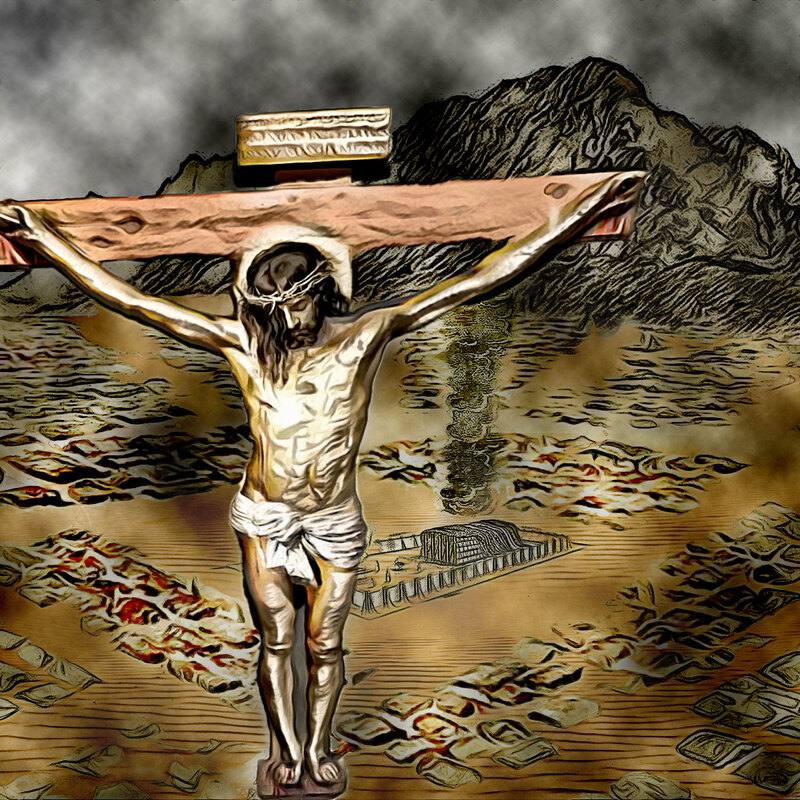
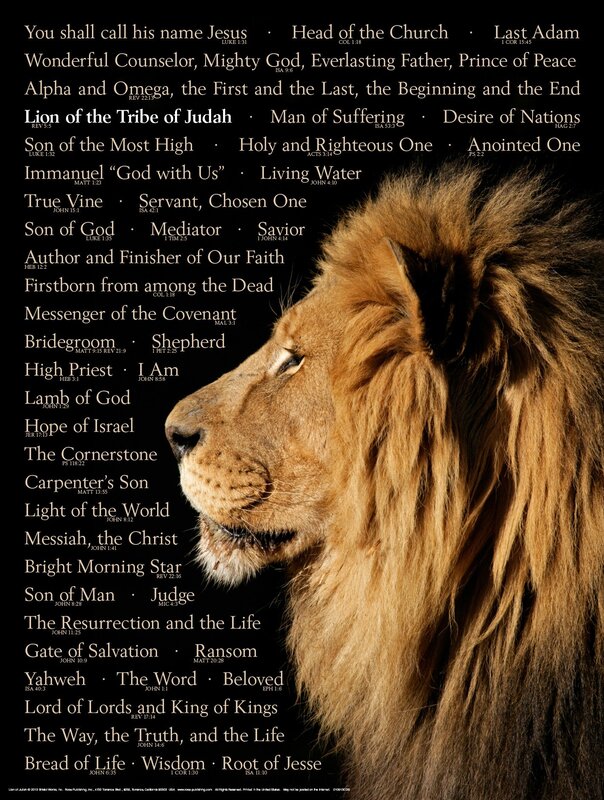


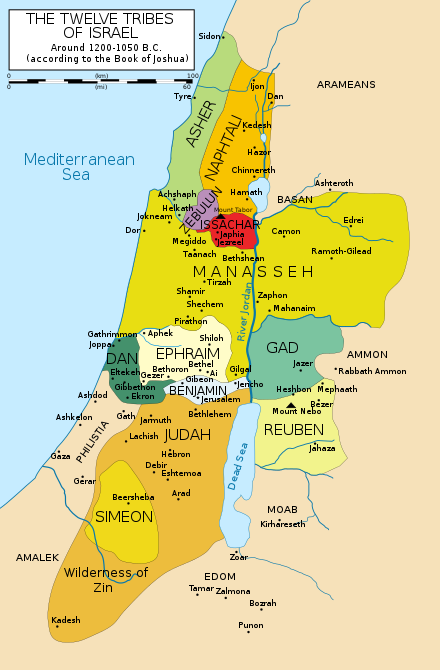

 RSS Feed
RSS Feed


























